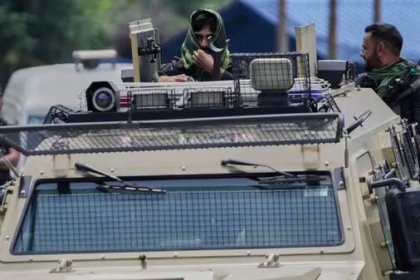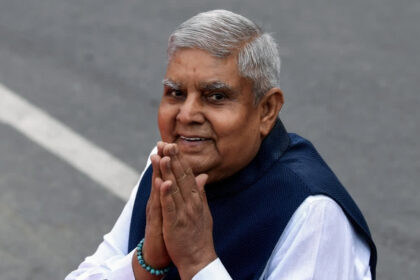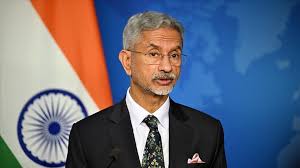PM Modi Criticises Congress for 1975 Emergency, Calls It One of Democracy’s Darkest Chapters
When Democracy Was Suspended
On June 25, 2025, Prime Minister Narendra Modi delivered a scathing critique of the Congress party on the 50th anniversary of the 1975 Emergency, calling it “one of the darkest chapters in the history of Indian democracy.” His statement revived national debate over a 21-month period when constitutional freedoms were curtailed, press was censored, opposition leaders were jailed, and India—the world’s largest democracy—entered a state of near-authoritarian rule.
Modi’s speech was more than political criticism. It was a reminder. A warning. And in the eyes of many, a strategic positioning of the BJP as the defender of democratic values in contrast to the Congress’s alleged history of repression.
To understand the full weight of his remarks, it is essential to re-examine the Emergency—its origins, execution, consequences, and the ideological fault lines it created.
The Political Climate Before the Emergency
By the early 1970s, Indira Gandhi, then Prime Minister and leader of the Congress party, was facing increasing political instability. The 1971 Bangladesh Liberation War had elevated her national stature, but by 1974-75:
- Inflation was rampant.
- Unemployment was rising.
- Public sector strikes and student protests were growing in number and intensity.
- Most damagingly, the Allahabad High Court, in June 1975, found Indira Gandhi guilty of electoral malpractice in her 1971 Lok Sabha win from Rae Bareli.
The verdict disqualified her from holding elected office for six years. Rather than step down, Gandhi recommended the President declare a state of Emergency under Article 352 of the Constitution, citing “internal disturbance.”
On June 25, 1975, the Emergency was declared. The Constitution was effectively suspended.
The Machinery of the Emergency
Overnight, the nature of the Indian state changed. Civil liberties were revoked. Opposition leaders were arrested. The press was shackled. Among the actions taken:
- Over 100,000 people were detained under preventive detention laws.
- Leaders like Jayaprakash Narayan, Morarji Desai, Atal Bihari Vajpayee, and L.K. Advani were jailed.
- Press censorship was institutionalised through direct government oversight of editorial content.
- The infamous Forced Sterilisation Program, led by Sanjay Gandhi, was launched to curb population growth—resulting in thousands of illegal and coercive operations.
- Parliament, now stripped of opposition voices, passed amendments increasing executive power.
The government termed these moves necessary to “restore order.” Critics saw them as a pretext for authoritarian control.
Narendra Modi and the BJP’s Legacy of Resistance
In his 2025 speech, Modi highlighted the BJP’s ideological roots in resisting the Emergency. At the time, the Bharatiya Jana Sangh (BJS)—the ideological precursor to the BJP—was a key member of the opposition coalition targeted by the crackdown.
Narendra Modi himself, then a young member of the Rashtriya Swayamsevak Sangh (RSS), was reportedly involved in underground resistance activities, helping organize dissent and distribute pamphlets.
The BJP’s narrative has long been built on its resistance during the Emergency, portraying itself as the custodian of the constitutional spirit, while painting Congress as the party that once trampled it.
Legacy and Impact – Long Shadows of a Dark Era
The Emergency ended in March 1977, when elections were finally held. In a historic defeat, Indira Gandhi and the Congress were voted out, and the Janata Party—a coalition of anti-Emergency forces—came to power. It was the first time the Congress lost control of the central government.
But the consequences of the Emergency have echoed ever since:
- Mistrust of centralized executive power deepened.
- A new generation of leaders, hardened in resistance, emerged to shape Indian politics in the 1980s and 1990s.
- Public memory of the Emergency became a symbolic weapon, used whenever debates over authoritarianism or press freedom arose.
The BJP has consistently drawn upon this memory—particularly during national crises or elections—to invoke its image as a party forged in struggle and principled dissent.
The 2025 Political Context – Why Now?
Modi’s remarks in 2025 come not just on an anniversary—but in a politically charged environment:
- The 2026 general elections are approaching.
- Congress is attempting a national revival through alliances and issue-based mobilization.
- The BJP is under pressure to reassert its ideological purity, particularly as questions emerge over media freedom, judiciary independence, and institutional autonomy.
By referencing the Emergency, Modi seeks to:
- Draw a moral line between the BJP and Congress.
- Remind voters—particularly the youth—of the Congress’s authoritarian past.
- Frame the BJP’s present governance as rooted in constitutional values, even amid criticism.
Memory as a Political Tool
The Emergency remains one of the most contested and consequential events in India’s democratic history. PM Modi’s remarks, while political in timing, reignite an old debate: Can Indian democracy afford to forget its own near-death experience?
For some, Modi’s statement is a necessary reminder. For others, it’s a strategic invocation of the past to control the narrative of the present.
Either way, the Emergency is no longer just history. It is once again a living fault line in Indian politics.
Also Read : Astronauts from India, Poland, and Hungary Launched on First Space Station Mission








